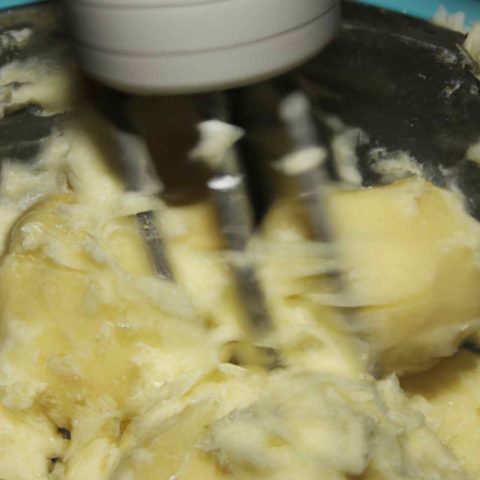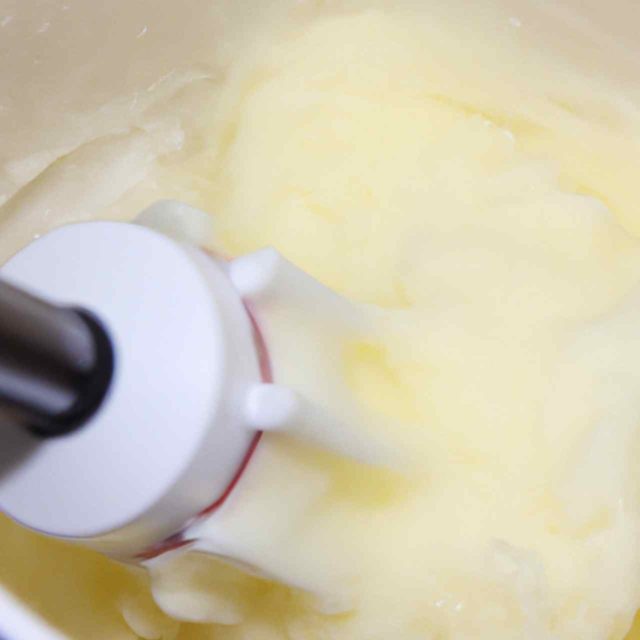A potato ricer is a simple tool that lets you easily mash potatoes without having to cut yourself or mess up your hands. In fact, the potato ricer makes mashed potatoes look as smooth as whipped cream.
With the potato ricer, there’s no danger of cutting yourself, no messy hands, and no frustration. It is also popular for baby food potatoes, but there are substitutes.
However, did you know that there are many alternatives to a potato ricer, and most of you probably have one in your kitchen already?
Here Are the Top 9 Potato Ricer Alternatives for 2024
These are not in any order, but if you’re tired of spending hours making mashed potatoes every week, then check out these potato ricer substitutes and see why it’s quickly becoming the most popular kitchen gadget around.
1. Colander And A Wooden Spoon
You can make mashed potatoes without a potato ricer using a colander and a wooden spoon. You’ll still end up with fluffy mashed potatoes, but you won’t have to spend $20+ on a potato ricer.
A potato ricer is a great tool for making mashed potatoes, but not everyone has one lying around. Luckily, you can easily make fluffy mashed potatoes without one using a colander and wooden spoon, so you will not be stuck at a holiday dinner when serving mashed potatoes to a crowd.
- To start, wash your potatoes thoroughly and cut them into small pieces. Then place them in a large pot and cover them with cold water.
- Bring the water to a boil and let it simmer until the potatoes are tender.
- Drain the potatoes well and transfer them to a colander bowl. Add salt and butter to taste.
- Using a wooden spoon, mash the potatoes until they reach the consistency you desire, passing them through the holes in the colander with a strong or thick wooden spoon.
Afterwards, drain off the excess liquid and serve. Mashed potatoes will also keep longer doing this.
This recipe works perfectly for mashed potatoes, but it can also be used for cooking other root vegetables like carrots, turnip, sweet potatoes, parsnips, rutabaga, etc.
2. Food Mill
A food mill is a kitchen gadget that can easily mash potatoes without requiring any special preparation of the potatoes.
Food mills are commonly used in restaurants and cafeterias, but they can also be found at grocery stores and convenience stores.
You’ll find food mills in two basic styles: hand-cranked models and powered models. Hand-crankers are generally easier to operate, but they won’t work well with large quantities of potatoes.
Powered models are usually more efficient, but they tend to be heavier and larger and, of course, more expensive.
There are several types of potato ricers available. Some are made specifically for mashing potatoes, while others are intended for making bread dough.
You may also come across potato mashers that look similar to a ricer, but they actually crush the potatoes instead of mashing them.
Choose a potato ricer that works well for your needs. If you plan on using it frequently, consider buying a model that is lightweight and easy to store.
3. Hand or Box Grater
You can make mashed potatoes without a potato ricer using a hand grater. Simply grate the potatoes using a cheesecloth or paper towel to remove excess moisture first.
Then being careful not to cut yourself – gently grate the potato.
Then add butter, milk, salt, and pepper, and mash until smooth with a wooden spoon.
You can also add other ingredients like garlic, onions, chives, parsley, thyme, rosemary, sage, cayenne, nutmeg, cinnamon, lemon zest, cream cheese, sour cream, bacon bits, etc.
Be as creative as you like.
4. Microplane
You can make mashed potatoes using a microplane grater. You simply grate the potatoes onto a bowl, add milk, butter, salt and pepper, and mash them with a fork until smooth.
This makes the mashed potatoes fluffier and easier to eat. You’ll find that the texture is very close to mashed potatoes made with a potato ricer.
A microplane is a small handheld gadget that looks similar to a cheese grater. It has tiny holes that let you grate food, including fruits and vegetables.

5. Rolling pin
How to Mash Potatoes with a Rolling Pin
You can make mashed potatoes if you do not have a potato ricer using a rolling pin instead.
You’ll still end up with perfectly fluffy mashed potatoes.
Simply rolled the cooked potatoes flat on a clean cutting board, crushing them. Then put them into a mixing bowl.
Next, take a wooden spoon, add salt and butter and mix well. Then add milk until you reach the consistency you desire.
Use a wooden spoon to press down on the mixture to release excess liquid. Once the mixture is smooth and creamy, remove it from the bowl and transfer it onto a serving dish. Enjoy!
6. Fork
How to Mash Potatoes with a Fork
Similar to the wooden spoon method, use the fork in a bowl ( it can be a collander if your potatoes are wet)
You can make mashed potatoes without a potato ricer using a fork instead. You’ll still end up with perfectly fluffy mashed potatoes, but you won’t have to spend hours trying to squeeze every last drop of water out of the potatoes.
7. Food processor
How to Mash Potatoes Without a Potato Ricer
A potato ricer is a great tool for making mashed potatoes. But if you don’t have one handy, you can still make delicious mashed potatoes using a food processor instead. Simply place the cooked potatoes in the food bowl, add salt and butter, and process until smooth. You’ll end up with perfectly fluffy mashed potatoes every time.
8. Electric mixer
How to Mash Potatoes with an Electric Mixer
You can make mashed potatoes without a potato ricer using an electric mixer instead. You’ll still end up with fluffy mashed potatoes, but not quite as fluffy as those made with a potato ricer.

Put some peeled, boiled potatoes into a bowl and add any cheese, butter, milk or seasoning. Then place the bowl on the countertop and start beating the mixture with a hand mixer until smooth.
You can also use a stand mixer to mash potatoes. Put some peeled, boiled potatoes inside the bowl of a stand mixer and beat the mixture with the paddle attachment until smooth.
Both methods work well, but the stand mixer method is easier since there is no need to wash the bowl after each batch.
9. Potato Masher
Potato Masher as an Alternative
A potato masher can work well as a substitute for a potato ricer. However, it won’t give you the same results as a ricer does; rice potatoes will be slightly more fluffy potatoes.
A potato ricer removes some of the starch from the cooked potatoes, leaving them fluffier and lighter.
A potato masher doesn’t remove the starch at all, so the potatoes end up mashed but a little heavier.
You’ll still get almost the same result if you use a potato masher instead of a potato ricer, but it won’t be quite as light. You may also notice that the potatoes come out slightly wetter after mashing them with a potato masher.
There are plenty of other alternatives to a potato ricer, including baking soda, a fork, and a spoon. All of those options will work fine, but none of them will produce the same results as a potato ricer.
Can I Use a Food Processor Instead of a Potato Ricer?
Food processors are perfect for making mashed potatoes since they allow you to control the consistency of the finished product. Plus, they’re easier to clean than a potato ricer. While both options are effective, a food processor does offer certain advantages over a potato ricer.
For example, a food processor allows you to choose between two different types of blades: flat and serrated. Flat blades create a fluffier texture, while serrated blades create a smoother texture. Both options are equally effective, but choosing the right blade type depends on the look you’re going for.
Also, a food processor lets you save money. Since you don’t have to buy a separate potato ricer. you’ll save money and not clutter up your kitchen.
Finally, a food processor is much easier to make mashed potatoes in bulk. See how much-mashed potatoes are per person for a thanksgiving or Christmas dinner if you plan on mashing potatoes in bulk.
What Can I Use if I Don’t Have a Ricer for Gnocchi?
Potatoes are used in almost every dish imaginable, including gnocchi. But if you don’t have a ricer, what can you use instead? Well, there are two options:
1. Press the potatoes into a bowl with a fork.
2. Mash the potatoes with a potato masher.
Both methods work just fine, though the second option might require a bit more elbow grease.
Conclusion
In conclusion, if you do not have a potato ricer, you should definitely consider buying a new one. They’re inexpensive, easy to clean and last forever.
But if you don’t have a potato ricer yet, there are many other ways to make riced potatoes.